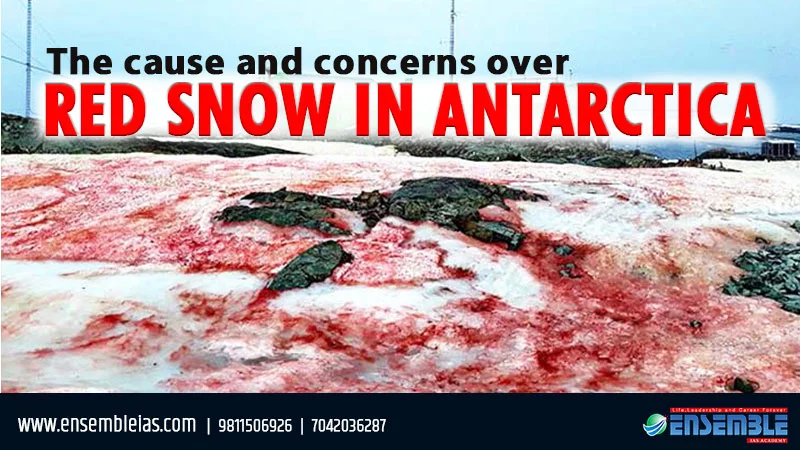 “Red snow” or “watermelon” is a phenomenon that has been known since ancient times. Now, it raises concerns about climate change.
“Red snow” or “watermelon” is a phenomenon that has been known since ancient times. Now, it raises concerns about climate change.
The cause and concerns over red snow in Antarctica, Over the last few weeks, photographs of “red snow” around Ukraine’s Vernadsky Research Base, off the coast of Antarctica’s northernmost peninsula, have gone viral. “Red snow” or “watermelon” is a phenomenon that has been known since ancient times. Now, it raises concerns about climate change.
Red snow in Antarctica: Why it happens
The cause and concerns over red snow in Antarctica, Aristotle is believed to be one of the first to give a written account of red snow, over 2,000 years ago. In History of Animals, Aristotle wrote: “And, by the way, living animals are found in substances that are usually supposed to be incapable of putrefaction; for instance, worms are found in long-lying snow; and snow of this description gets reddish in colour, and the grub that is engendered in it is red, as might have been expected, and it is also hairy.”
What Aristotle described as worms and grub, the scientific world today calls algae. The Greek philosopher was right: it is the algae that give the snow its red tinge. This alga species, Chlamydomonas Chlamydomonas nivalis, exists in snow in the polar and glacial regions, and carries a red pigment to keep itself warm .
What watermelon snow signals
In turn, the red snow causes the surrounding ice to melt faster, a 2017 study from Alaska Pacific University said. The more the algae packed together, the redder the snow. And the darker the tinge, the more the heat absorbed by the snow. Subsequently, the ice melts faster. While the melt is good for the microbes that need the liquid water to survive and thrive, it’s bad for glaciers that are already melting from a myriad of other causes, the study said.
These algae change the snow’s albedo — which refers to the amount of light or radiation the snow surface is able to reflect back. Changes in albedo lead to more melting. In the melting of snow in the Arctic, the key drivers have been snow and ice albedo, according to a 2016 study in the journal Nature.
Source: The Indian Express
For more details : Ensemble IAS Academy Call Us : +91 98115 06926, +91 7042036287
Email: [email protected] Visit us:- https://ensembleias.com/
#india #prime_minister #narendra_modi #technology #solutions #policy #blog #current_affairs #daily_updates #editorial #geographyoptional #upsc2020 #ias #k_siddharthasir #ensembleiasacademy #editorial #ias #redsnow #antarctica #climatechange #watermelon #WednesdayWisdom #wednesdaythougths #algaspecies #upscexam #newdelhi #education #learning #exampreparation #peninsula



